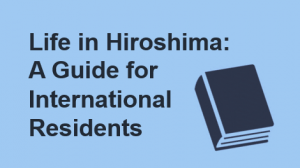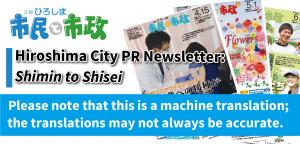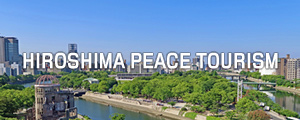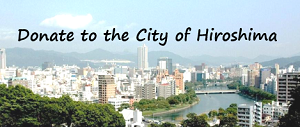本文
1) The Atomic Bombing and the Will of Hiroshima
At 8:15 am on August 6, 1945, the first atomic bomb used against human beings was dropped on Hiroshima.
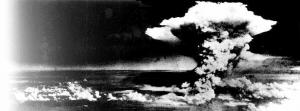
(Photo by the US Army, Courtesy of the Hiroshima Peace Memorial Museum)
600 meters over the city and with a blinding flash, the atomic bomb exploded 43 seconds after being dropped, creating a fireball that blazed like a small sun. More than one million degrees Celsius at its center, in one second the fireball reached a radius of over 200 meters, and the surface temperatures near the hypocenter rose to 3,000 to 4,000°C.
At the time of the explosion, fierce heat rays and radiation burst out in every direction, causing the air around the fireball to expand, creating a super-high-pressure blast. The complex interactions of these three factors inflicted tremendous damage upon the city characterized by instant and massive destruction, indiscriminate mass slaughter, and radiation. In particular, the damage caused by radiation led to decades of human suffering.
The precise number of those who perished in the bombing is as of yet unknown. The City of Hiroshima estimates that approximately 140,000 people died by the end of December 1945 when the acute effects of radiation subsided.
Approximately half of those who were within 1.2 kilometers from the hypocenter died within the day, and 80 to 100 percent of those who were closer to the hypocenter are thought to have died. Among those who were able to escape instant death or death within the day, the closer to the hypocenter they were at the time of the bombing, the more serious damage they suffered. Their mortality rates were also higher.
“No one else should suffer as we have”
This is the heart-wrenching message of the hibakusha who have overcome hatred for their perpetrators and the rejection of others while agonizing over their cruel and miserable circumstances. At the heart of this message is a love for humanity and the spirit of reconciliation.
As a response to this, the following words are inscribed on the Cenotaph for the A-bomb Victims to embody that message:
“Let all the souls here rest in peace; for we shall not repeat the evil.”
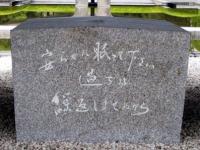 This inscription represents the Will of Hiroshima, which, enduring past grief and overcoming hatred, yearns for the peaceful coexistence and prosperity of all humanity, as well as for the realization of genuine world peace.
This inscription represents the Will of Hiroshima, which, enduring past grief and overcoming hatred, yearns for the peaceful coexistence and prosperity of all humanity, as well as for the realization of genuine world peace.
The Will of Hiroshima also represents the will for peace of the hibakusha who experienced the tragedy of the world’s first atomic bombing. Based on the Will of Hiroshima, the City of Hiroshima continues to appeal for the abolition of nuclear weapons and realization of lasting world peace through preserving, disseminating, and conveying the realities of the atomic bombing.
Related pages
2) Becoming an International Peace Culture City
3) What is the Culture of Peace?
4) The Significance of Promoting the Culture of Peace
5) Promoting the Culture of Peace is the Role of Cities
6) The Will for Peace Based on the Realities of the Atomic Bombing
7) Promotion of the Culture of Peace by Mayors for Peace
Conclusion: Importance of Citizen-Led Initiatives
Inquiries regarding this page
Peace Promotion Division, Citizens Affairs Bureau
Tel: 81-82-242-7831/Fax: 81-82-242-7452
E-mail: peace@city.hiroshima.lg.jp



